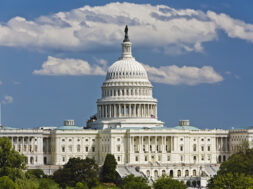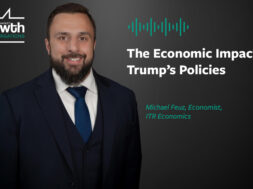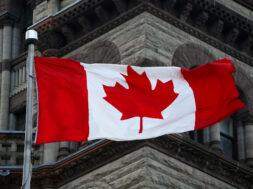Middle-Market Public Policy Roundup
The Fed gives small and midsize businesses more pandemic support, freezes interest rates until 2022 and outlines some long-term challenges.

In this week’s roundup, we look at the Federal Reserve’s Main Street Lending Program, which was given wider latitude to support small and midsize companies impacted by the coronavirus pandemic. We also provide a summary of the Fed’s tentative plan to freeze interest rates until 2022 in support of economic recovery, as well as some challenges the central bank expects the U.S. will face in the long term.
Fed Expands Small and Midsize Business Support
The Federal Reserve Board on Monday expanded its Main Street Lending Program to allow more small and medium-sized businesses to access loans.
The Fed lowered the minimum loan amount, raised the maximum loan limit, adjusted the principal repayment schedule to begin after two years, and extended the term to five years, providing borrowers with greater flexibility in repaying the loans.
“Supporting small and mid-sized businesses so they are ready to reopen and rehire workers will help foster a broad-based economic recovery,” Federal Reserve Chair Jerome Powell said in a statement. “I am confident the changes we are making will improve the ability of the Main Street Lending Program to support employment during this difficult period.”
Changes include lowering the minimum size for loans obtained through the New Loan Facility and Priority Loan Facility to $250,000 from $500,000 and increasing the maximum loan size of the facility to $35 million from $25 million. The Fed is also increasing the maximum loan size for all other facilities.
The central bank will increase the term of each loan to five years from four, and it will delay principal payments for two years, rather than one.
The changes to the program don’t address its “affiliation rules,” which are similar to those in the Paycheck Protection Program and treat a company with private equity backing as a subsidiary. Those restrictions could limit the program’s effectiveness for PE-backed companies.
The Main Street Lending Program was established with the approval of the Treasury Secretary and with $75 billion in equity provided by the Treasury Department from the CARES Act.
“This should help support a broad-based economic recovery as the country reopens,” U.S. Treasury Secretary Steven Mnuchin said in a statement.
The Fed expects the program to open for lender registration soon and to begin purchasing loans shortly thereafter.
Fed Plans No Rate Increases Through 2022
The Federal Reserve’s policymaking body projected no interest rate increases through 2022 as part of its plan to provide support to the economy in the wake of the coronavirus pandemic.
Following its meeting on June 10, the Federal Open Market Committee unanimously agreed to keep rates steady at a range of 0% to 0.25%. The Fed also suggested it could maintain its benchmark rate at near-zero levels for the next two years.
“We are strongly committed to using our tools to do whatever we can, and for as long as it takes, to provide some relief and stability, to ensure that the recovery will be as strong as possible, and to limit lasting damage to the economy,” Federal Reserve Chairman Jerome Powell said at a press conference following the Wednesday meeting.
Low interest rates could mean cheaper loans from banks, providing a hospitable environment for M&A activity to resume as coronavirus lockdowns are lifted nationwide.
Fed Projects a Long Unemployment Recovery as Improvements Appear
Worst-case scenario projections offered by the Fed offer a dire outlook for U.S. economic activity in 2020 along with persistent unemployment.
Projection materials showed U.S. GDP could slow by as much as 10% this year, followed by a swift recovery. GDP could increase by 5% before the end of 2021, according to median estimates.
However, unemployment could remain high for years to come. The Fed said unemployment might not return to pre-pandemic levels until after 2022 under median estimates, while less optimistic figures project jobless numbers in the double digits for the next two years.
May’s unemployment figures released last week by the Department of Labor indicated improvement in the economy as jobless claims fell to 13.3% that month from April’s peak of 14.7%— although a widely reported “misclassification error” led some policy watchers to conclude the rate is likely higher. Unemployment still fell month over month, even after accounting for the error, according to the Labor Department. RSM US LLP’s deputy chief economist explained the reason for the misclassification on a recent episode of the Middle Market Growth Conversations podcast.
The total number of Americans drawing unemployment benefits declined at the end of May to 20.9 million, based on Labor Department figures released Thursday.

Benjamin Glick is Middle Market Growth’s associate editor.


